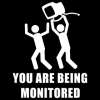Hello CompaqBabe,
In order to better assist you, we will need the STOP code that is displayed during the BSoD. If you do not remember the STOP error, I will provide a way so that you may share that information with us.
In addition to STOP codes, windows also provides valuable troubleshooting information in the Event Viewer. Event Viewer is available on all versions of Windows from XP to Windows 8. However, the process for accessing Event Viewer differs depending on your version.
To access Event Viewer in Windows XP:
-
Click the Start Button.
-
Click Control Panel.
-
Click Performance and Maintenance.
-
Click Administrative Tools.
-
Click Computer Management.
-
Find Event Viewer and Click it.
To access Event Viewer in Windows Vista, and Windows 7:
To access Event Viewer in Windows 8:
-
Hit the Windows Key.
-
Type in “View Events”.
-
Hit enter.
Once you’ve accessed Event Viewer, the process for finding out what windows knows about your BSOD is the same across all versions of Windows. To do this:
-
Select Windows Logs on the left side of the window.
-
You will see a number of sub-categories. Selecting any of these categories will bring up a series of event logs in the center of the screen.
-
Any BSOD errors are listed as “Error”.
-
Double click any found errors to investigate.
Here you will be presented with any relevant information regarding your errors. Often this will simply display the STOP code reported by the error. However, other errors or warnings could provide clues to your BSOD’s cause.
You should be able to copy/paste the STOP error in your next reply.
















 Sign In
Sign In Create Account
Create Account

